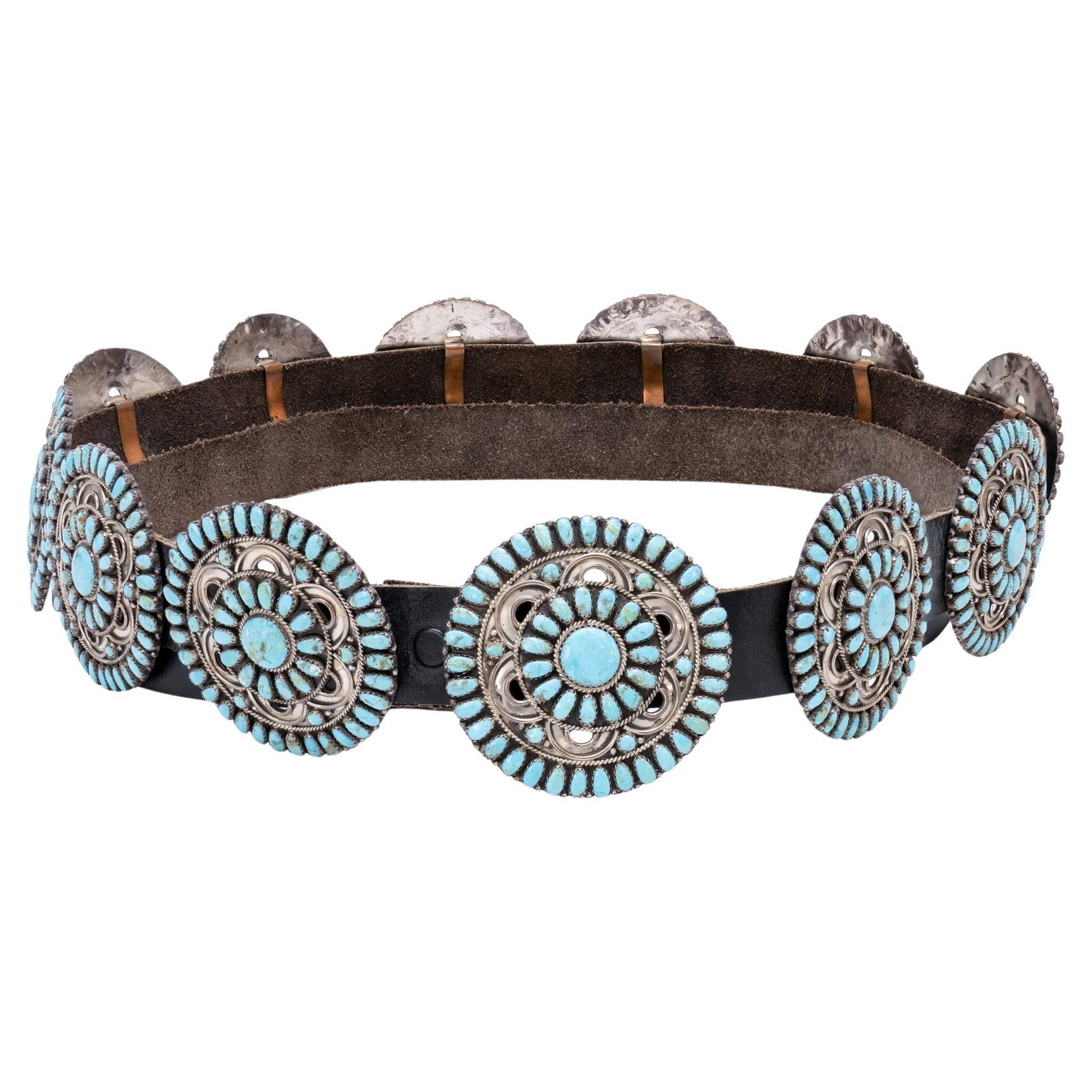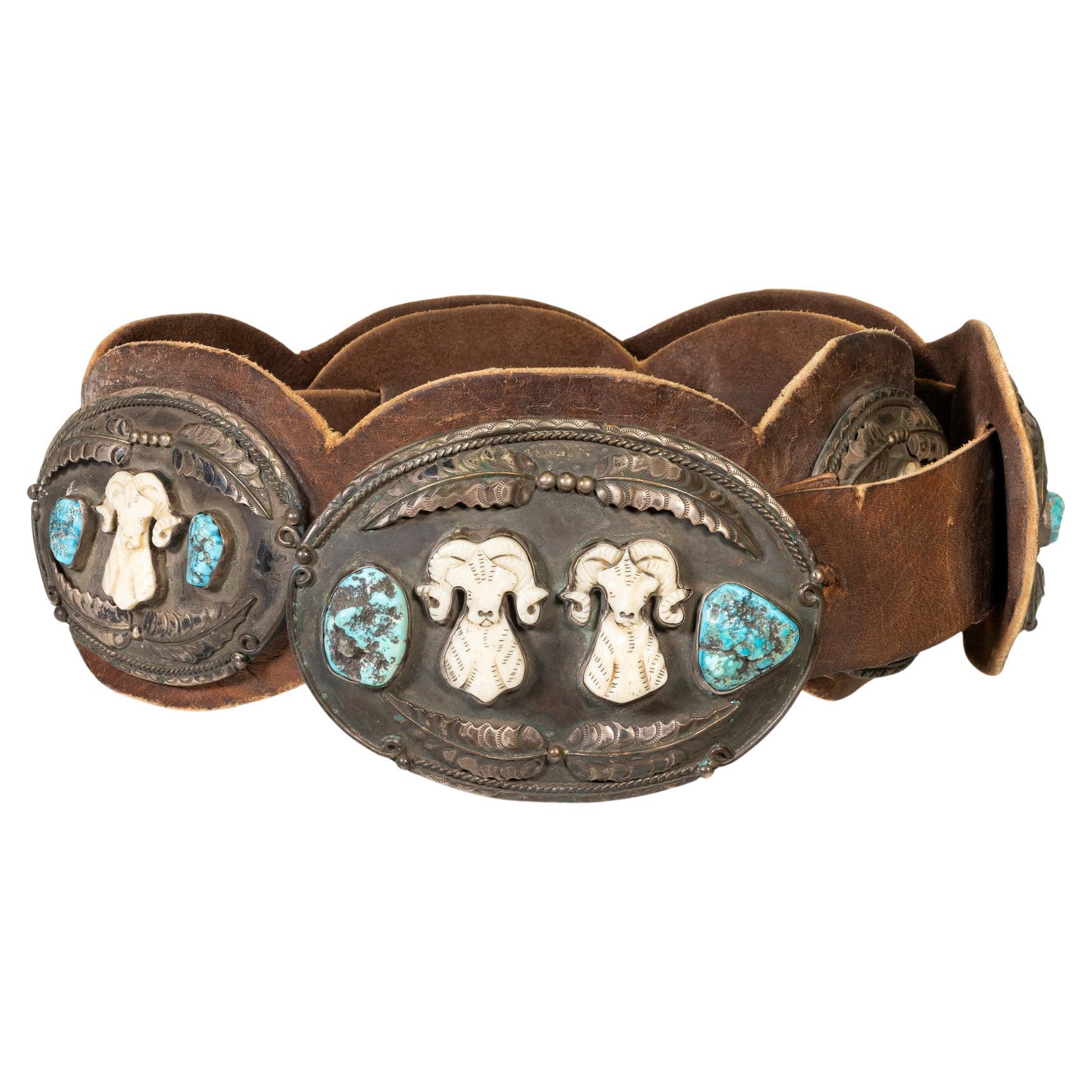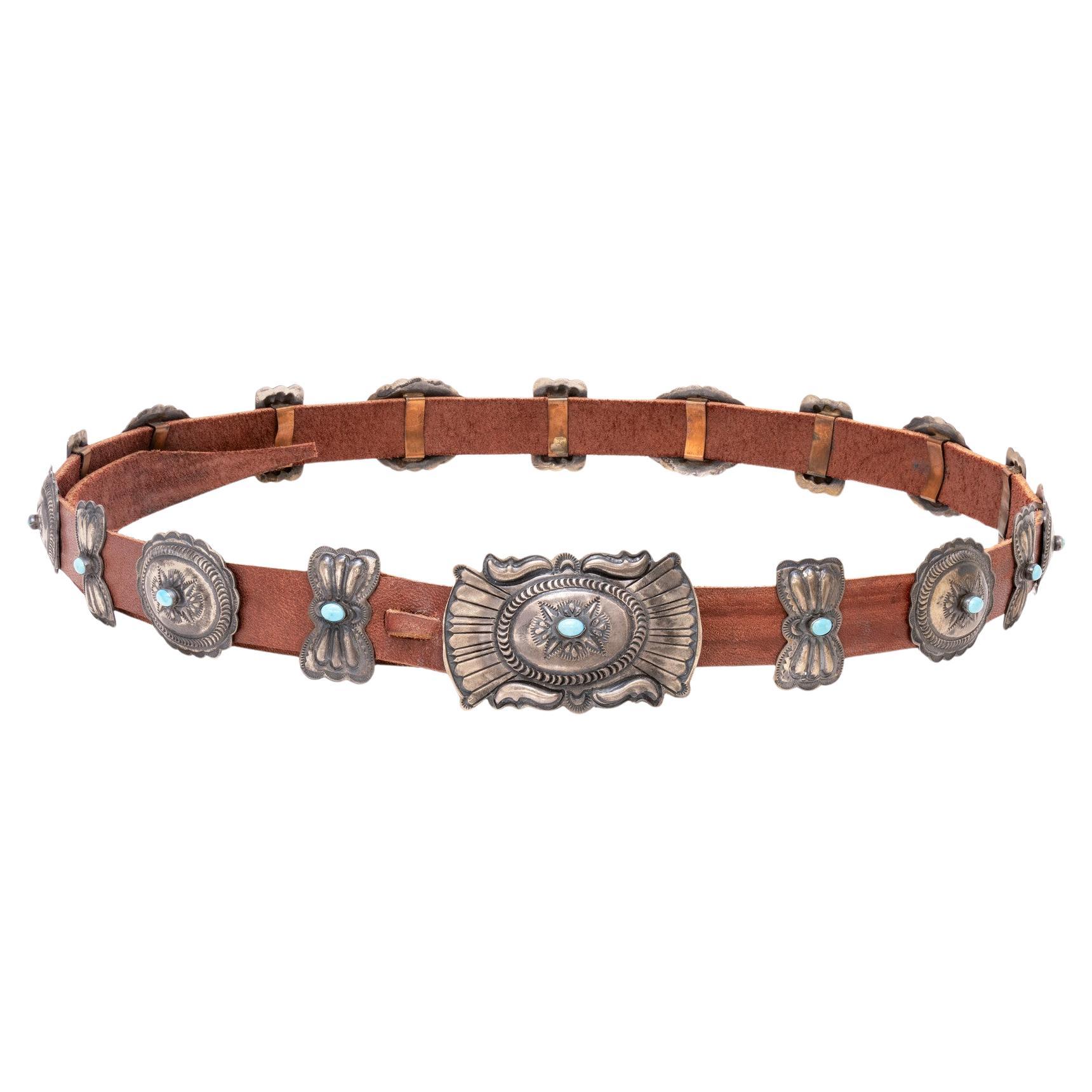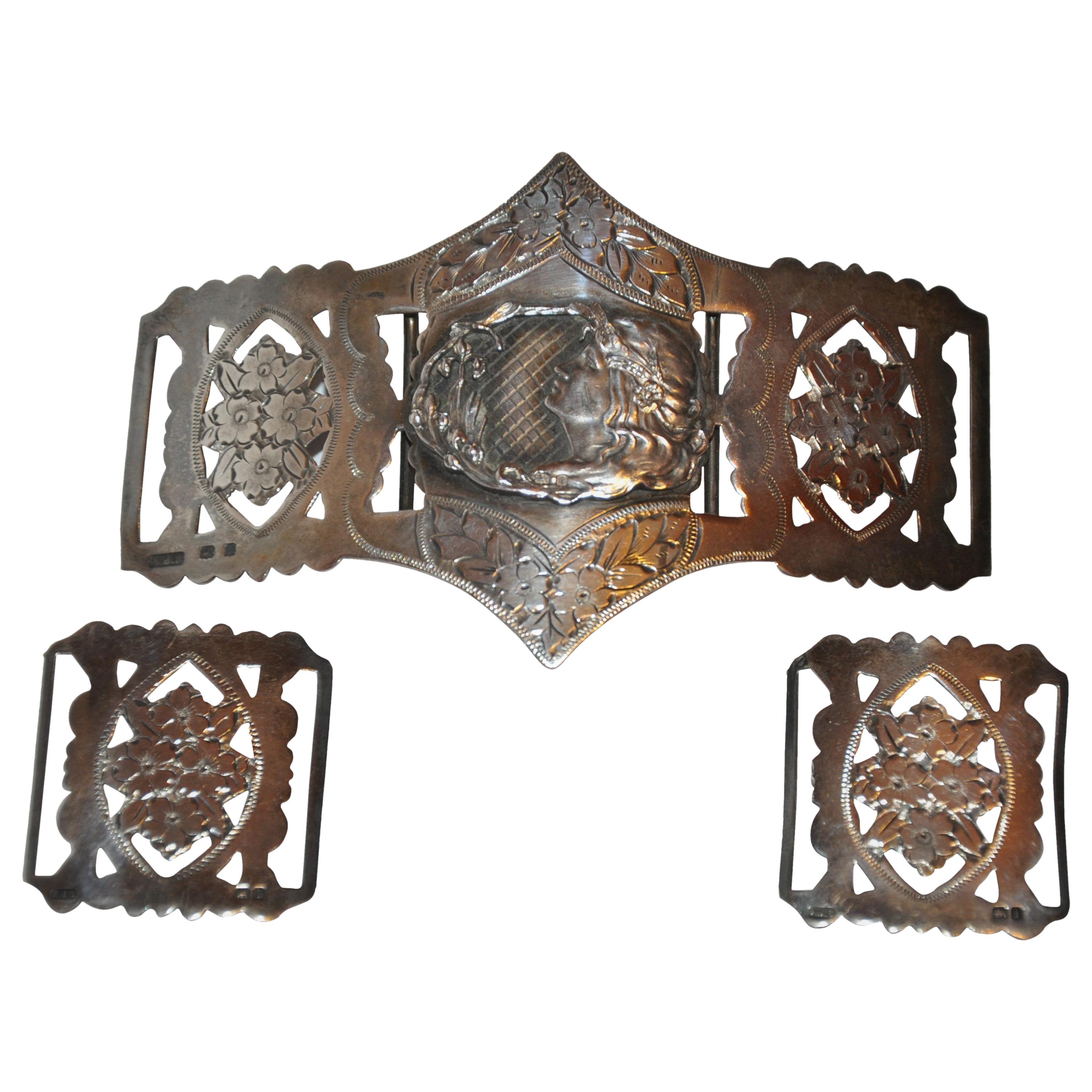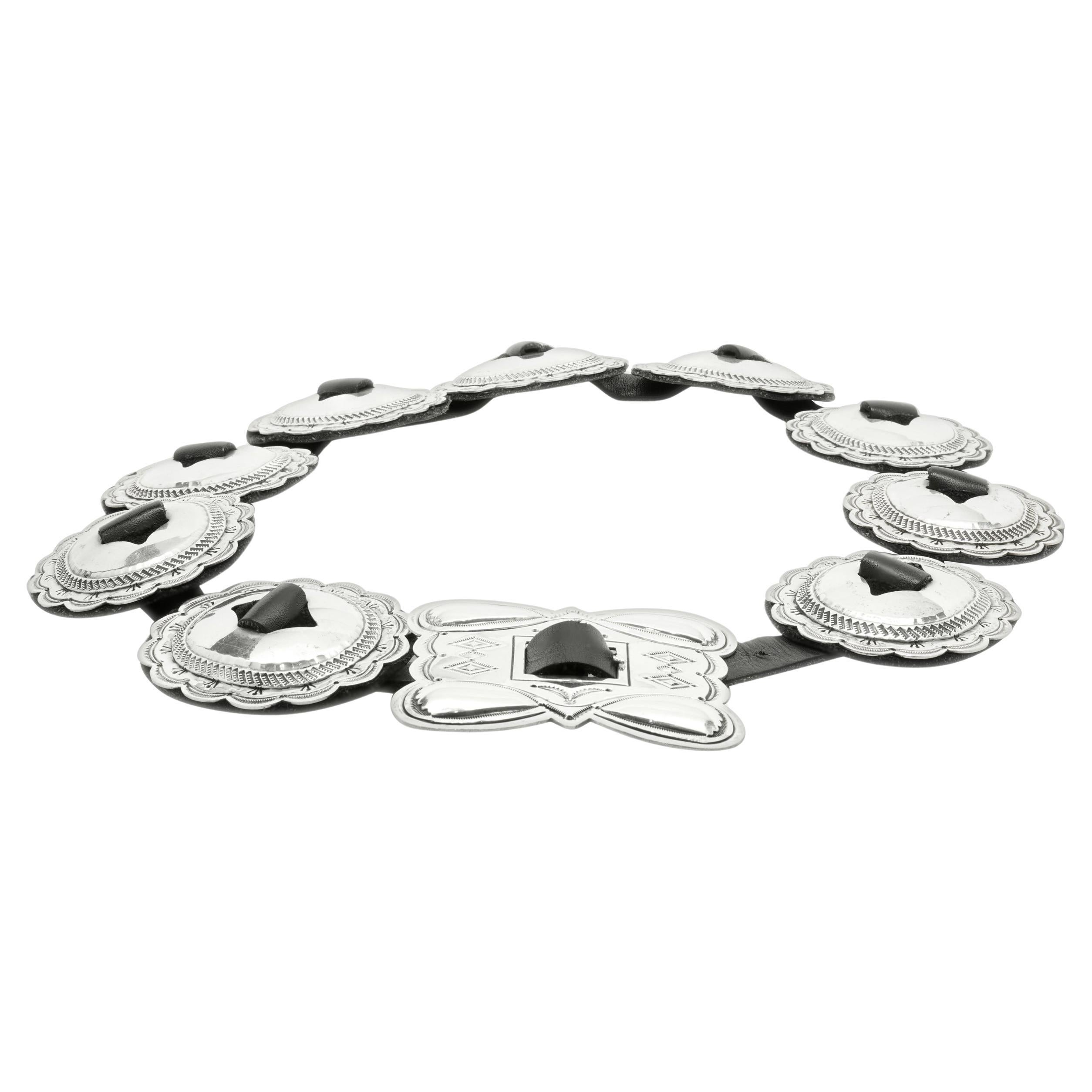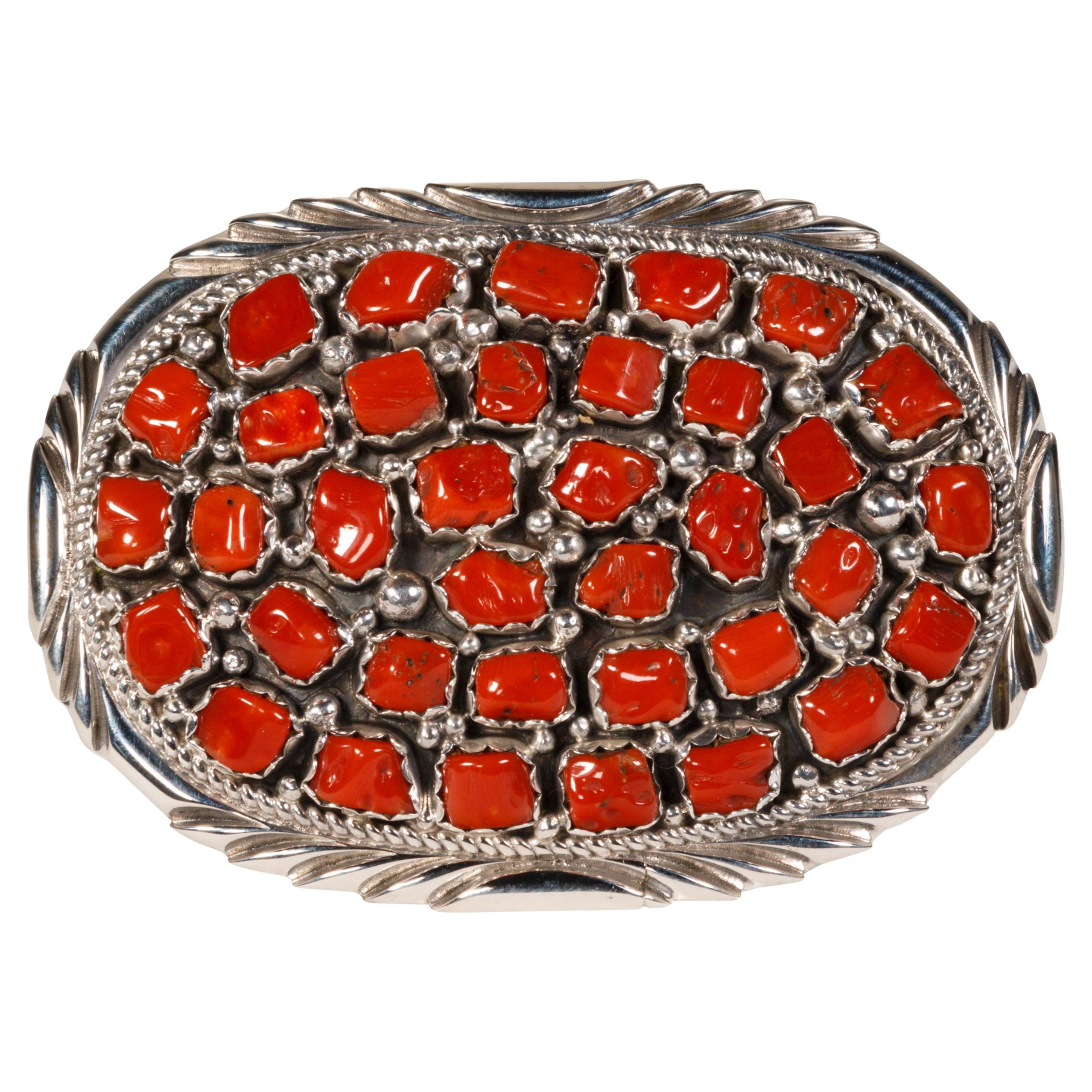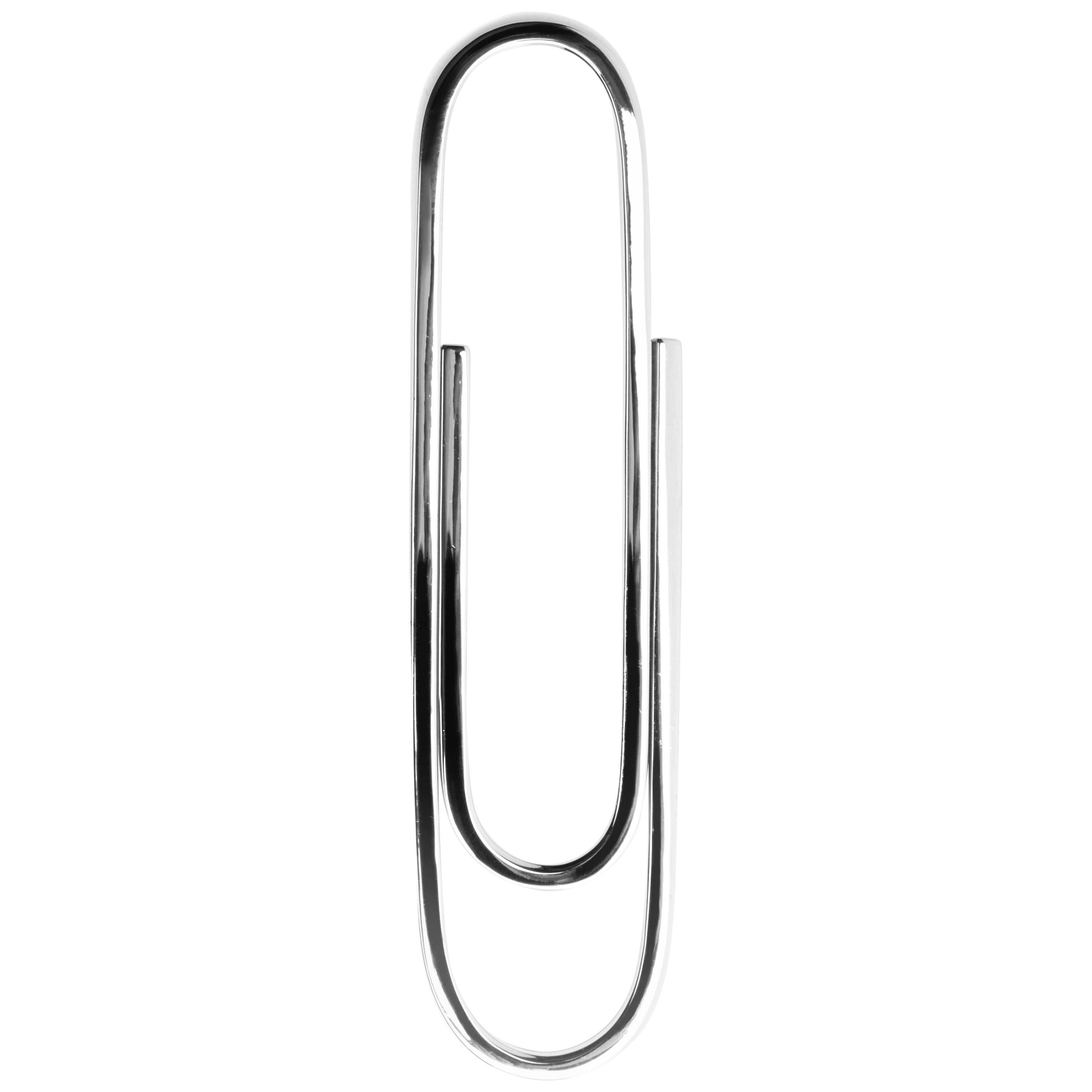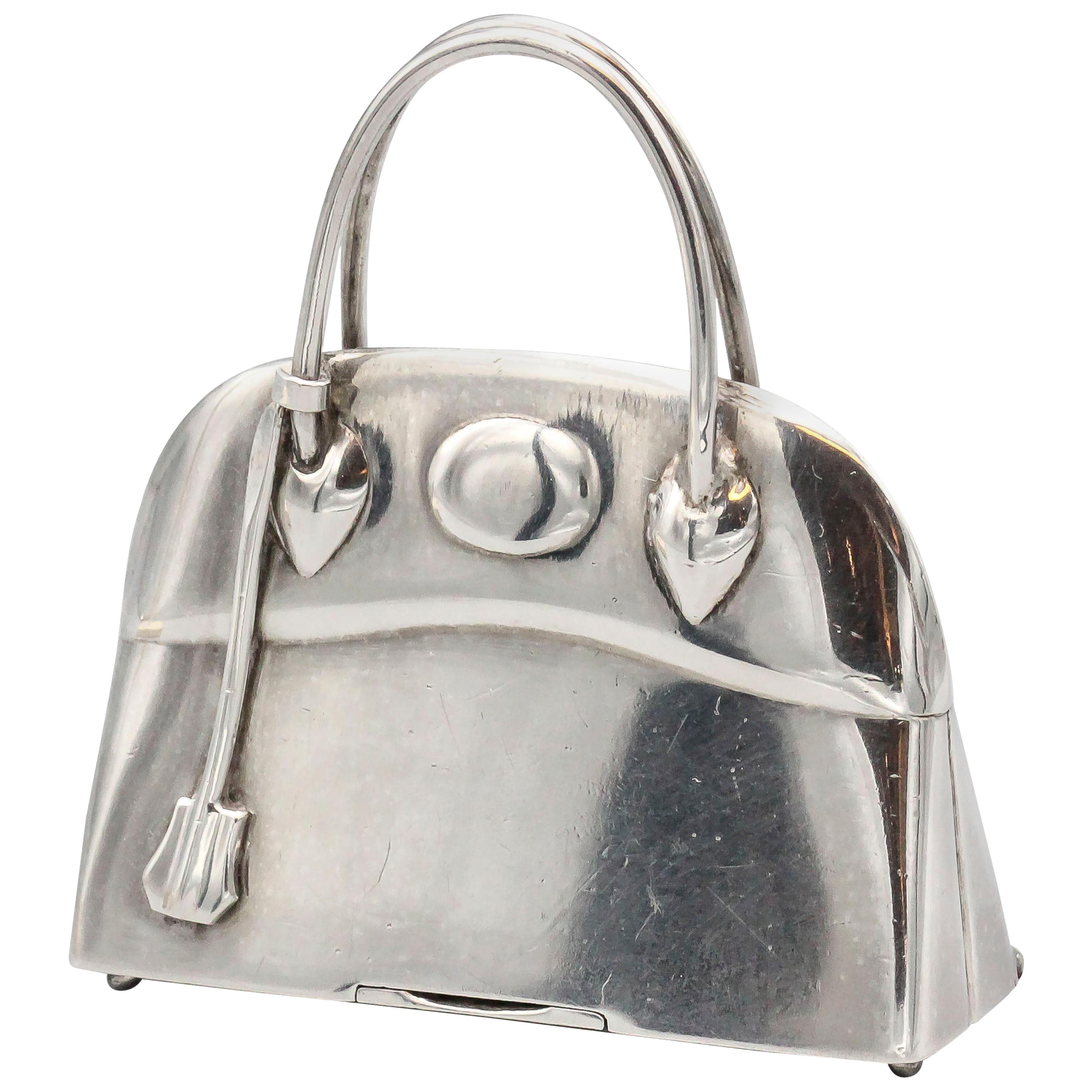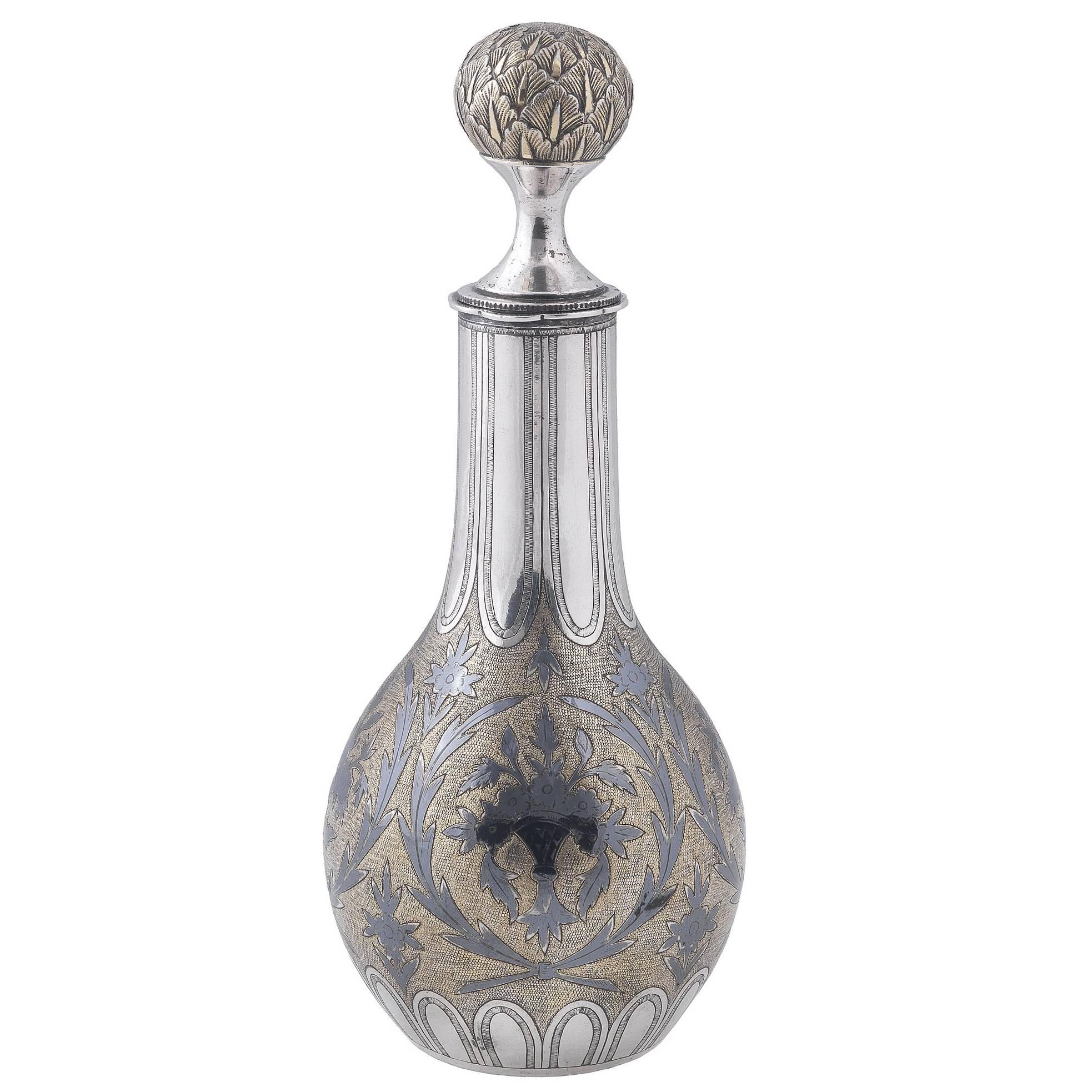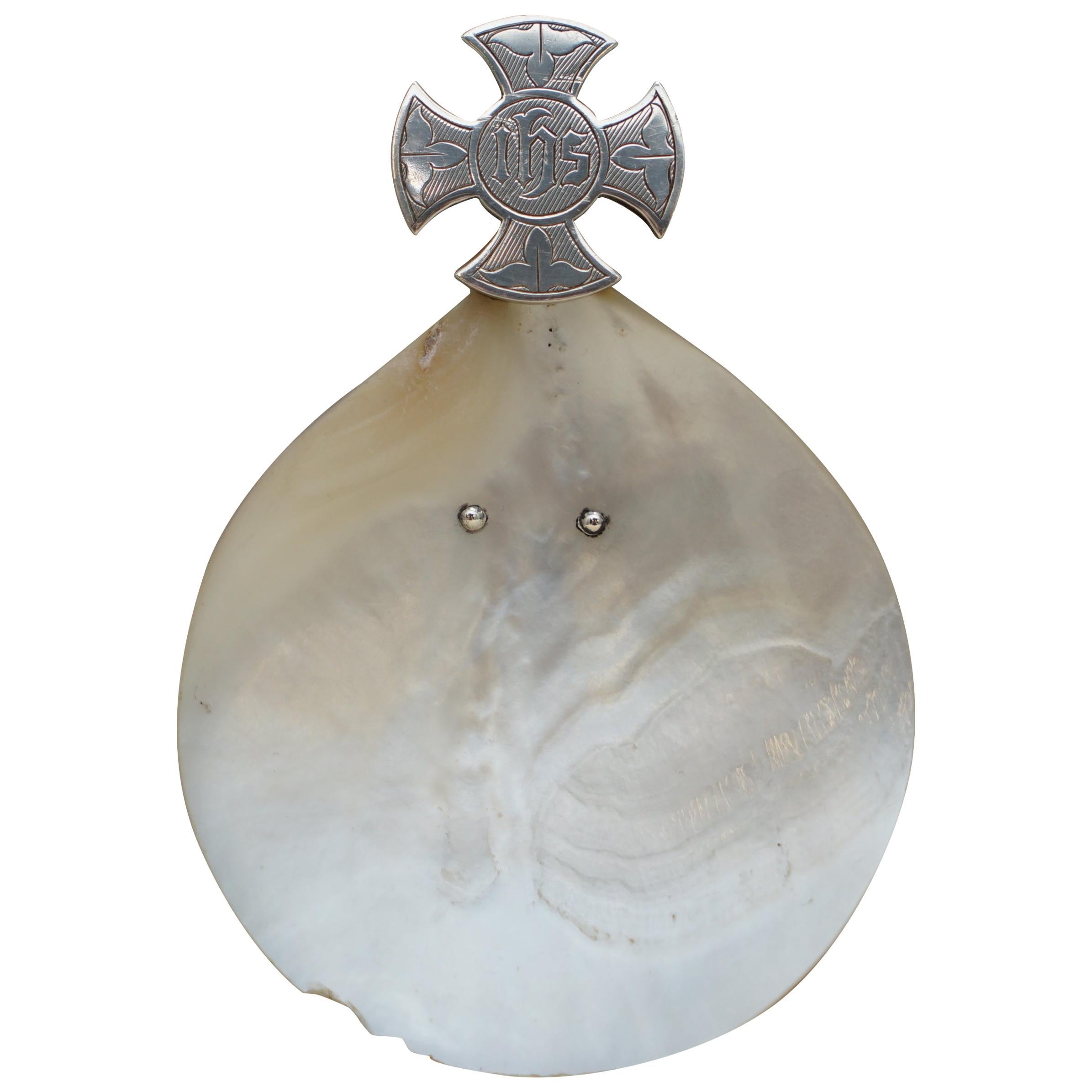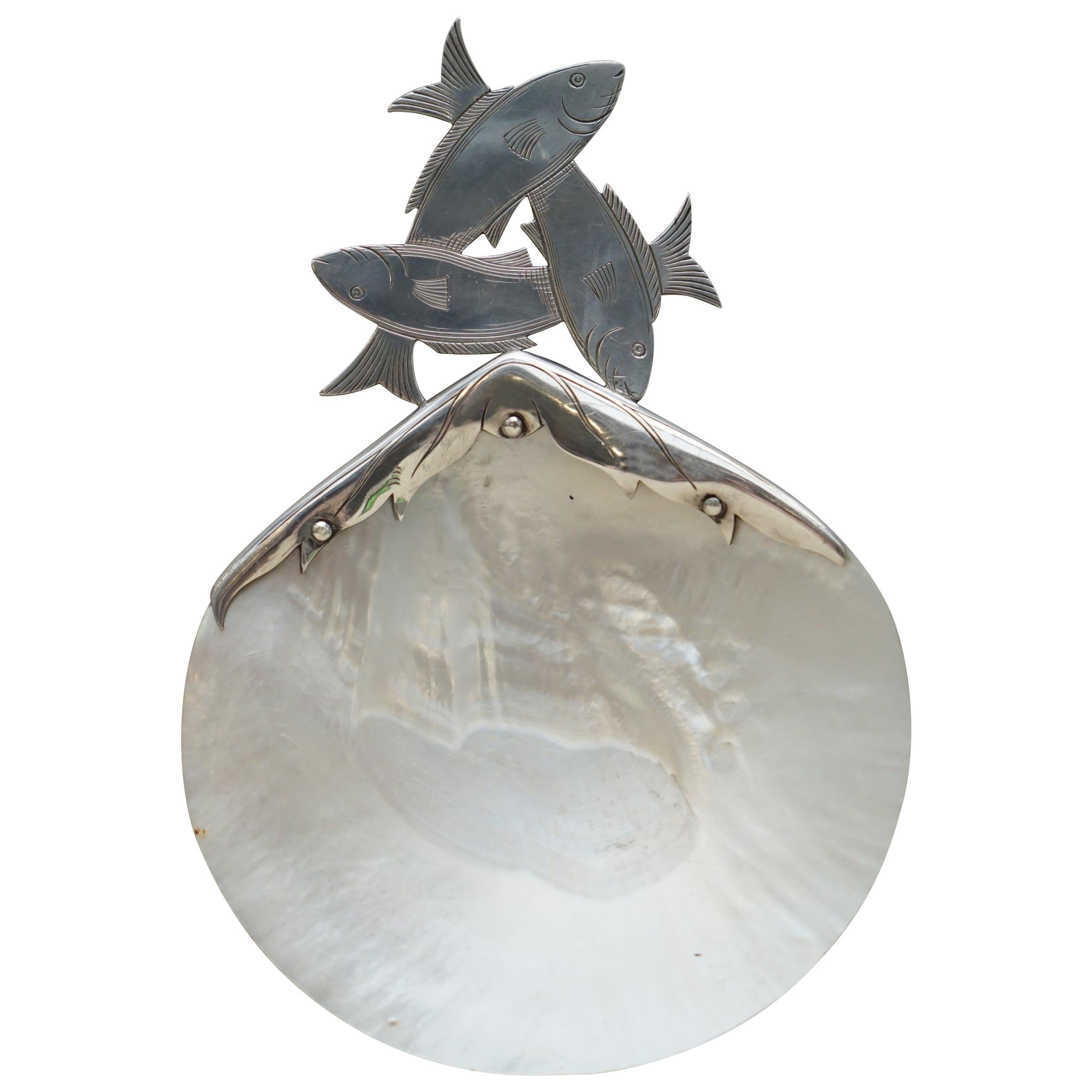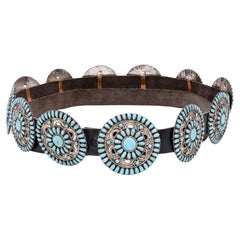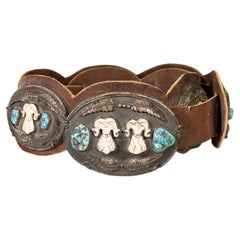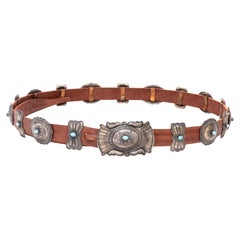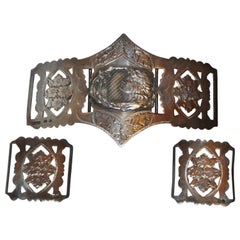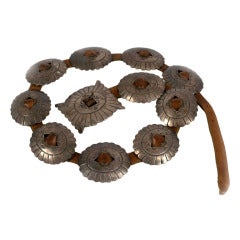
A First-Phase Navajo Silver Concho Belt
View Similar Items
1 of 1
A First-Phase Navajo Silver Concho Belt
$3,500List Price
About the Item
- Metal:
- Dimensions:Width: 3 in (76.2 mm)Length: 46 in (1,168.4 mm)
- Place of Origin:
- Period:
- Date of Manufacture:c. 1900
- Condition:
- Seller Location:Salt Lake City, UT
- Reference Number:1stDibs: JU14012055267
Authenticity Guarantee
In the unlikely event there’s an issue with an item’s authenticity, contact us within 1 year for a full refund. DetailsMoney-Back Guarantee
If your item is not as described, is damaged in transit, or does not arrive, contact us within 7 days for a full refund. Details24-Hour Cancellation
You have a 24-hour grace period in which to reconsider your purchase, with no questions asked.Vetted Professional Sellers
Our world-class sellers must adhere to strict standards for service and quality, maintaining the integrity of our listings.Price-Match Guarantee
If you find that a seller listed the same item for a lower price elsewhere, we’ll match it.Trusted Global Delivery
Our best-in-class carrier network provides specialized shipping options worldwide, including custom delivery.You May Also Like
Navajo Needlepoint Turquoise Concho Belt
By Navajo
Located in Coeur d Alene, ID
Navajo needlepoint concho belt. Signed LMB, marked sterling. 11 conchos total. Exceptional design on each concho, featuring floral style center with complementary scalloped silverwork and final layer of turquoise framing concho. Old Pawn. Acquired from a Navajo trader.
PERIOD: After 1950
ORIGIN: Navajo, Southwest
SIZE: Total Belt Length 62 1/2" Leather; conchos 2 1/4"D
The word “concho” sometimes spelled “concha”, comes from the Spanish word meaning shell. Some of the first “conchos” were made of melted silver dollars and resembled a shell. Concho belts reportedly began appearing in Navajo country in the late 1860s. Other Native Americans including Zuni and Hopi also made traditional concho belts before long.
Concho belts can cost into the thousands of dollars depending upon the craftsmanship, amount of silver, rarity of turquoise and stones used. Belts in the upper end of the price scales are usually made before the turn of the century. Buyers should deal with reputable dealers as many fakes and look-a-likes exist. A well-made belt with age to it will fetch a bigger premium and hold its value better.
The earliest concho belts are now referred to as “First Phase” belts. This style of belt was made before Native silversmith had learned much about soldering. The conchos were hammered out from melted coins, cut, and filed into shape, engraved and a diamond shape slot was cut out of the middle of the concho, with a bar left across the center of the diamond shaped slot for the leather loop. Conchos that required no soldering are generally thought to be made from 1860-1880.
Second phase conchos were done 1890-1900s in which silversmith began to solder.
Third phase conchos is when you start to see the “butterfly” or “bow” appear between conchos and the use of turquoise as an adornment. A butterfly (bow) is a smaller concho in between bigger conchos. A belt with butterflies and sometimes turquoise would be from the early 1900s – 1930s.
The timelines may slightly differentiate depending upon who you ask. Natives first had concho belts for personal use only, but around the turn of the last century, tourist demand had kicked in and a new outlet emerged.
belts & buckles jewelry silver belts conchos navajo needlepoint southwest turquoise...
Category
Vintage 1950s American Native American More Jewelry
Materials
Turquoise, Sterling Silver
Navajo Walrus Ivory and Turquoise Concho Belt
By Navajo
Located in Coeur d Alene, ID
Carved ivory bighorns with Blue Kingman Mine turquoise. Wonderful patina. Original leather; nine conchos total. Signed A.J.M.
PERIOD: After 1950
ORIGIN: Navajo, Southwest
SIZE: Total belt length 56"; buckle 3 1/2" x 5"; conchos 3" x 4"
The word “concho” sometimes spelled “concha”, comes from the Spanish word meaning shell. Some of the first “conchos” were made of melted silver dollars and resembled a shell. Concho belts reportedly began appearing in Navajo country in the late 1860s. Other Native Americans including Zuni and Hopi also made traditional concho belts before long.
Concho belts can cost into the thousands of dollars depending upon the craftsmanship, amount of silver, rarity of turquoise and stones used. Belts in the upper end of the price scales are usually made before the turn of the century. Buyers should deal with reputable dealers as many fakes and look-a-likes exist. A well-made belt with age to it will fetch a bigger premium and hold its value better.
The earliest concho belts are now referred to as “First Phase” belts. This style of belt was made before Native silversmith had learned much about soldering. The conchos were hammered out from melted coins, cut, and filed into shape, engraved and a diamond shape slot was cut out of the middle of the concho, with a bar left across the center of the diamond shaped slot for the leather loop. Conchos that required no soldering are generally thought to be made from 1860-1880.
Second phase conchos were done 1890-1900s in which silversmith began to solder.
Third phase conchos is when you start to see the “butterfly” or “bow” appear between conchos and the use of turquoise as an adornment. A butterfly (bow) is a smaller concho in between bigger conchos. A belt with butterflies...
Category
Vintage 1950s American Native American More Jewelry
Materials
Turquoise, Sterling Silver
Navajo Turquoise and Sterling Silver Concho Belt
Located in Coeur d Alene, ID
Navajo concho belt. 8 oval conchos and 9 butterfly conchos, making 17 total. Each concho having small Kingman turquoise stone in center and hand stamped details. Small enough to fit ...
Category
Late 20th Century American Vanity Items
Materials
Turquoise, Sterling Silver
Victorian-Era Etched Floral with Inlaid "Floral Lady" 3-Piece Silver Belt Buckle
Located in New York, NY
Magnificently detailed, this 3-piece Victorian-era etched Silver buckle of beautiful florals on all three pieces highlights the center buckle with inlaid "Floral Lady". All ...
Category
Antique Early 1800s British Victorian More Silver, Flatware and Silverplate
Native American Navajo John B. Begay jr. Sterling Silver 9 Concho Belt
Located in Scottsdale, AZ
Designer: John B. Begay Jr.
Material: sterling silver
Dimensions: belt measures 38.75-inches long
Weight: 520 grams
Category
21st Century and Contemporary Vanity Items
Materials
Sterling Silver
Navajo Coral Nugget Belt Buckle
By Navajo
Located in Coeur d Alene, ID
Shadowbox belt buckle with multi coral nuggets. Marked sterling silver. Made by Navajo silversmith J. Begay. Stunning oxblood coral stones surrounded by twisted rope border and sterl...
Category
Late 20th Century American Native American More Jewelry
Materials
Coral, Sterling Silver
Recently Viewed
View AllMore Ways To Browse
Vintage Navajo Sterling Silver Belt Buckle
Silver Concho Belt
Navajo Silver Belt
Silver Concho Belt Vintage
Sterling Concho Belt
Sterling Silver Concho Belt
Vintage Sterling Conchos
Vintage Copper Belt
Navajo Flatware
Navajo Silver Flatware
Hermes Flatware
Navajo Flatware
Navajo Silver Flatware
Tiffany Loving Cup
Tiffany Silver Vinaigrette
Victorian Novelty Dagger
Carved Stickpin
Castellani Brooch
